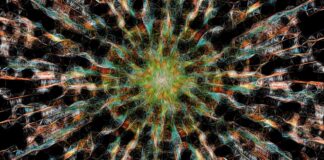Migraine patches are a form of transdermal medication delivery system designed to provide relief from migraine headaches. These patches typically contain active ingredients such as menthol, camphor, or lidocaine, which are absorbed through the skin and exert their effects locally to alleviate migraine symptoms. Migraine patches offer a convenient and non-invasive alternative to traditional oral medications, allowing for targeted and controlled delivery of therapeutic agents to the affected area. In recent years, migraine patches have gained popularity as a complementary or adjunctive treatment option for migraine sufferers, offering potential benefits such as rapid onset of action, reduced systemic side effects, and improved patient compliance.
1. Mechanism of Action
Migraine patches exert their therapeutic effects through various mechanisms of action, depending on the specific active ingredients contained within the patch. For example, menthol and camphor act as topical analgesics and counterirritants, producing a cooling sensation that distracts from pain and reduces inflammation. Lidocaine, on the other hand, is a local anesthetic that blocks nerve signals responsible for transmitting pain sensations, providing temporary relief from migraine symptoms. Additionally, some migraine patches may contain ingredients such as magnesium or feverfew, which are thought to have vasodilatory and anti-inflammatory properties that can help alleviate migraine pain.
2. Targeted Delivery
One of the key advantages of migraine patches is their ability to deliver medication directly to the site of pain, bypassing the digestive system and minimizing systemic exposure to the drug. By adhering the patch to the skin over the affected area, the active ingredients are absorbed through the skin and penetrate into the underlying tissues, where they exert their therapeutic effects locally. This targeted delivery approach allows for rapid onset of action and enhanced efficacy, as the medication can directly interact with the pain receptors and inflammatory pathways involved in migraine pathogenesis.
3. Convenience and Ease of Use
Migraine patches offer a convenient and user-friendly alternative to traditional oral medications for migraine relief. The patches are typically small, lightweight, and discreet, making them easy to apply and wear throughout the day. Unlike oral medications, which may require frequent dosing or administration with water, migraine patches can be applied directly to the skin without the need for additional equipment or preparation. This convenience factor makes migraine patches particularly appealing for individuals who prefer a hassle-free and non-invasive treatment option for managing their migraine symptoms.
4. Reduced Systemic Side Effects
Because migraine patches deliver medication directly to the site of pain, they can minimize systemic exposure to the drug and reduce the risk of systemic side effects commonly associated with oral medications. By bypassing the digestive system and avoiding first-pass metabolism in the liver, migraine patches can achieve therapeutic drug levels in the target tissue while minimizing drug exposure to other organs and tissues. This localized delivery approach may help mitigate common side effects such as gastrointestinal upset, dizziness, and drowsiness, which are often reported with oral migraine medications.
5. Rapid Onset of Action
Another advantage of migraine patches is their potential for rapid onset of action, allowing for quick relief from migraine symptoms. Because the active ingredients are delivered directly to the site of pain, they can begin exerting their therapeutic effects almost immediately upon application. This rapid onset of action is particularly beneficial for individuals experiencing acute migraine attacks, as it allows for prompt relief from pain, nausea, and other associated symptoms. Additionally, some migraine patches may contain ingredients such as caffeine or menthol, which have stimulant or analgesic properties that can further enhance the speed and efficacy of pain relief.
6. Non-Invasive Treatment Option
Migraine patches offer a non-invasive and well-tolerated treatment option for migraine sufferers, particularly those who may have difficulty swallowing pills or are sensitive to the side effects of oral medications. Unlike injections or infusions, which require administration by a healthcare professional, migraine patches can be self-applied at home and worn discreetly under clothing, allowing individuals to continue with their daily activities while receiving migraine relief. This non-invasive nature of migraine patches makes them suitable for use in various settings, including at home, at work, or while traveling.
7. Complementary Therapy
Migraine patches are often used as a complementary or adjunctive therapy to conventional migraine treatments, such as oral medications, lifestyle modifications, and behavioral therapies. By providing targeted and localized relief from migraine symptoms, patches can complement the effects of oral medications and help individuals achieve better control over their migraine attacks. Additionally, some individuals may find that using migraine patches in combination with other therapies allows for more personalized and effective management of their migraine symptoms, leading to improved quality of life and functional outcomes.
8. Adverse Reactions
While generally well-tolerated, migraine patches may cause skin irritation or allergic reactions in some individuals. Common adverse reactions associated with migraine patches include redness, itching, burning sensation, or rash at the application site. These reactions are typically mild and transient, resolving spontaneously within a few hours or days after patch removal. However, individuals with sensitive skin or a history of allergic reactions should exercise caution when using migraine patches and discontinue use if severe or persistent skin reactions occur. Additionally, it’s essential to follow the manufacturer’s instructions for patch application and removal to minimize the risk of skin irritation or adverse effects.
9. Availability and Cost
Migraine patches are available over the counter (OTC) or by prescription, depending on the specific formulation and active ingredients. Some patches may contain only natural ingredients such as menthol or camphor and can be purchased without a prescription from pharmacies, drugstores, or online retailers. Other patches may contain prescription-strength medications such as lidocaine or sumatriptan and require a prescription from a healthcare provider. The cost of migraine patches varies depending on the brand, formulation, and quantity purchased, with OTC patches generally being more affordable than prescription patches.
10. Future Directions and Research
As interest in non-invasive migraine treatments continues to grow, research into the efficacy and safety of migraine patches is ongoing. Future studies may explore novel formulations, delivery methods, and active ingredients to improve the speed, efficacy, and tolerability of migraine patches. Additionally, research may focus on identifying biomarkers or predictive factors that can help determine which individuals are most likely to benefit from migraine patch therapy and optimize treatment outcomes. By advancing our understanding of migraine pathophysiology and treatment strategies, ongoing research aims to further enhance the role of migraine patches as a valuable adjunctive therapy for migraine management.
Migraine patches offer a promising avenue for migraine management, providing individuals with a convenient, non-invasive, and targeted treatment option for relieving migraine symptoms. With their localized drug delivery mechanism, rapid onset of action, and potential for reducing systemic side effects, migraine patches have garnered attention as a complementary therapy to traditional oral medications. However, it’s essential for individuals to be aware of potential adverse reactions, such as skin irritation or allergic responses, and to follow proper application and removal techniques to minimize these risks. Despite these considerations, migraine patches represent a valuable addition to the migraine treatment armamentarium, offering a personalized and effective approach to managing migraine attacks and improving overall quality of life for migraine sufferers.
Research into migraine patches continues to evolve, with ongoing studies exploring new formulations, delivery methods, and active ingredients to enhance their efficacy and tolerability. Additionally, efforts are underway to better understand the underlying mechanisms of migraine pathophysiology and identify biomarkers or predictive factors that can help tailor migraine patch therapy to individual patient needs. As research advances, it’s anticipated that migraine patches will play an increasingly important role in migraine management, offering individuals a safe, effective, and convenient option for relieving migraine symptoms and improving their overall well-being.














